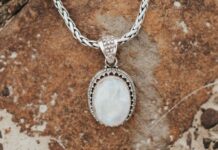Aboriginal paintings are not just art; they are a living embodiment of the culture and spirituality of the Indigenous peoples of Australia. These paintings tell stories of the Dreamtime, a term used to describe the creation period according to Aboriginal belief, and depict the natural world, which is deeply connected to the spiritual realm. Here you will glimpse the significance of Indigenous spirituality and artistry in aboriginal paintings.
The Connection Between Spirituality and Artistry
Indigenous spirituality is at the heart of Aboriginal paintings. It is considered that the spirits of ancestors still inhabit the land and guide the living. This connection to the spiritual realm is reflected in the art of Indigenous peoples, including their paintings. Art is not just a representation of the physical world but also a manifestation of the spiritual world. It is a way of communicating with the spirits and invoking their power.
The Dreamtime
The Dreamtime is a central concept in Aboriginal spirituality and is depicted in many aboriginal paintings. It refers to the period of creation when ancestral beings roamed the land, creating the landscape, animals, and plants. The Dreamtime is not just a time of the past but is believed to be a living force that continues to shape the world today. Many such paintings depict Dreamtime stories; each painting is like a visual representation of a sacred story or myth.
The Significance of Symbols
These paintings are often filled with symbols that have deep spiritual significance. These symbols may represent ancestral beings, animals, plants, or landscapes. Each symbol is imbued with meaning, and the combination of symbols in a painting can tell a complex story. These symbols are not just decorative elements; they are a visual language that communicates the stories and beliefs of the Indigenous peoples.
Art as a Means of Preservation
For Indigenous peoples, art is not just a means of self-expression but also a way of preserving their culture and passing it on to future generations. Aboriginal paintings are a vital part of this cultural preservation. They document stories, beliefs, and traditions that may not have been written down. By creating paintings, Indigenous artists ensure their culture and spirituality will live on.
The Diversity of Aboriginal Art
This art is diverse, reflecting the many different Indigenous cultures that exist in Australia. Each culture has its unique style and symbolism, reflected in the paintings. Some paintings are highly detailed and realistic, while others are more abstract. Some use bright, bold colours, while others are more muted. Despite these differences, all these paintings share a common thread of spirituality and connection to the land.
Preserving Culture Through Art
These art forms are more than just beautiful works of art. They are a living embodiment of the spirituality and culture of Indigenous peoples. These paintings communicate with the spiritual realm, document stories and traditions, and preserve culture for future generations. It is a unique and vital part of Australia’s cultural heritage and a testament to the enduring strength of Indigenous spirituality and artistry.
Conclusion
Choosing the right gallery to purchase these paintings is crucial in supporting Indigenous artists and preserving their cultural legacy. A reputable gallery with ethical and fair practices, including transparency about the origin and pricing of the artwork, and a commitment to authenticity and quality is essential. A diverse collection of artworks from different Indigenous cultures and artists is also important, reflecting the rich diversity of Indigenous spirituality and culture, and providing collectors with an opportunity to appreciate the different styles and stories represented in the artwork. By making informed and responsible purchasing decisions, the buyer can support Indigenous artists and contribute to preserving this important cultural heritage.























